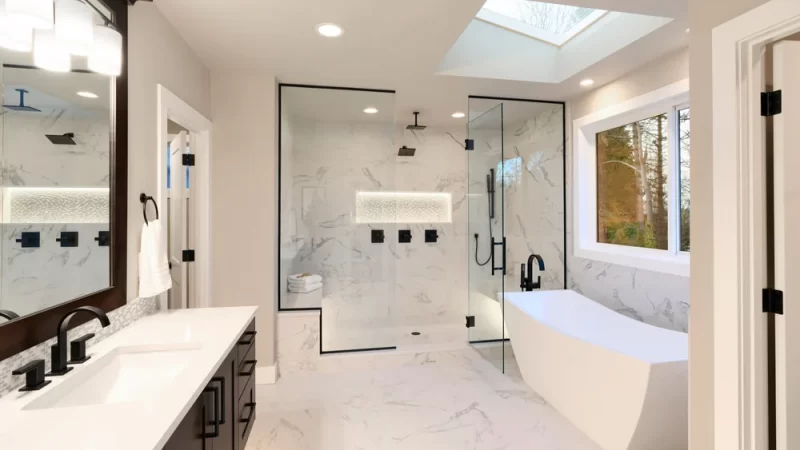Common Plumbing Problems and How to Fix Them Yourself

Every homeowner faces plumbing issues at some point. Whether it’s a clogged drain or a water heater that needs to be replaced, these problems can be incredibly frustrating.
However, it is important to know that many of these problems are easy to fix. In this article, we will go over some of the most common plumbing problems and how you can fix them yourself!
Clogged Drains and Toilets
Clogged drains and toilets are one of the most common plumbing problems homeowners face. Fortunately, these issues are often easy to fix with a little bit of effort. Start with a plunger for both toilets and drains. The simple plumbing tool can loosen clogs with air pressure, and you can even use chemical drain cleaners for a more powerful solution. If these are unsuccessful, a specialized drain snake (also known as a plumber’s snake) is another option available at home improvement stores.
The p-trap under sinks is another common cause of clogged drains, especially when hair and soap scum build up in it. However, plumbing codes require these traps to have a cap that can be removed with a pair of pliers for easy cleaning. If you notice that multiple drains in your home are clogged, it may be time for a professional inspection and repiping. Investing in these preventative steps can keep your home’s pipes from breaking down or collapsing.
Leaky Faucets and Pipes
Dripping faucets are one of the most common plumbing problems and luckily, they’re also among the easiest to fix. Leaking faucets are not only annoying, but they can lead to water waste and result in higher utility bills.
To begin your repair, start by identifying where the leak is coming from. Water rings on cabinetry under sinks, or water spots on the drywall and ceiling around the faucet, are sure signs of a leaking faucet. You can then use a wrench to tighten the adjusting ring or packing nut, which will stop the leak.
Next, cover any drains with a drain cover (a towel or old t-shirt will do) to prevent small parts from falling down the drain and becoming lost. Finally, remove the handle and stem (or the entire faucet assembly if it’s a cartridge or ceramic-disk model) to access the O-rings and washers that may need replacing. Once replaced, coat the new O-rings in plumber’s grease to help prevent future leaks.
Water Heater Issues
No one likes the sound of dripping faucets, especially when it gets worse over time. Not only does it annoy, but it can also cost you dearly on your water bill over the long run. On average, a single drip per second adds up to 3,000 gallons of water every year.
Luckily, this is an issue that can often be solved by simply plunging the drains. In other cases, more extensive blockages may require the help of a plumber.
Similar to clogged toilets, sewer system backups are a nightmare and can lead to a number of issues in your home or building. They can result in the foul-smelling odors mentioned above, plus they can also lead to significant and expensive damage to walls, floors, and personal property. Generally, this issue needs to be dealt with by professional plumbing services, but there are a few things you can do to prevent it from occurring in the first place.
Low Water Pressure
When it comes to plumbing, low water pressure is a common problem that can be extremely frustrating for homeowners. Whether it’s taking a shower or washing dishes, low water pressure can make these tasks less efficient and may even lead to damaged pipes in the long run. Luckily, there are several ways that homeowners can improve their home’s water pressure.
One way is to install a water pressure booster. Another way is to install a pressure-reducing valve. Both of these solutions can help to increase your water pressure, but it’s important to have a plumber assess your situation before making any changes.
Homeowners can also try turning off all of the water sources in their home and then reading their water meter. If the meter reading changes dramatically while they’re not using any water in their home, this is a sign of a leak somewhere in their plumbing system. This is another plumbing issue that should be fixed as soon as possible to avoid any damage or flooding in the future.







